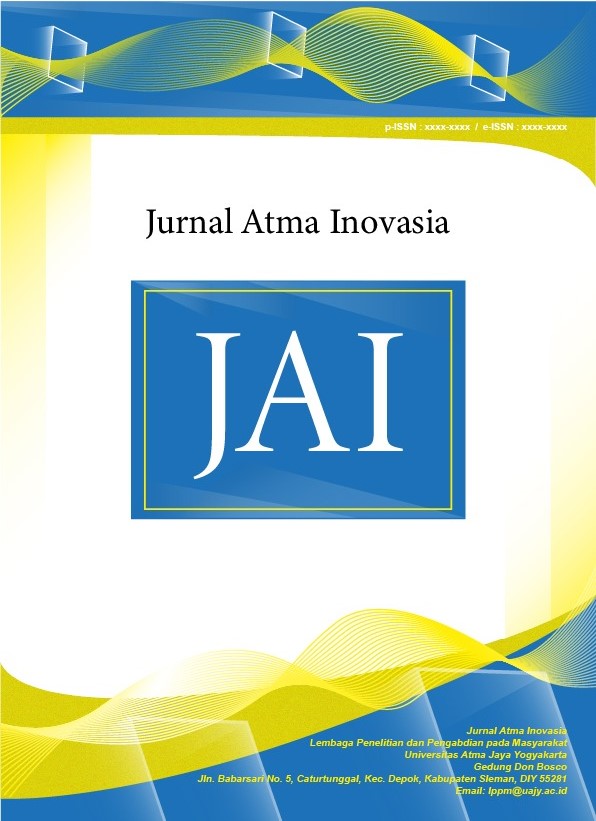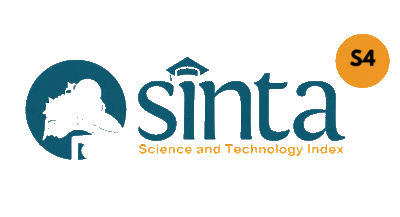Pemanfaatan Kelapa dan Pemberdayaan Potensi Desa sebagai Desa Wisata Berbasis Kearifan Lokal
DOI:
https://doi.org/10.24002/jai.v3i4.3982Keywords:
Tourist village, counselling, coconut, village potential, covid-19Abstract
Giripeni Village is one of the villages in Wates District, Kulon Progo Regency. Giripeni village is on the outskirts of the city, the area is mostly rice fields. Most of the people work as farmers and breeders. The availability of abundant foodstuffs such as grass and secondary crops is used to raise livestock. Giripeni Village has a lot of potential that can be developed, so that it becomes a tourist village to attract the wider community, both nationwide and worldwide from Giripeni Village. The development of this tourism village is one of the rural tourism developments which is expected to become a sustainable tourism development in accordance with government policies in the tourism sector. On the other hand, during the Covid-19 epidemic, many workers lost their jobs and some required workers to do their work from home. Group 88 provides video on using coconut fruit, so that people in Giripeni village whose jobs are affected by the Covid-19 pandemic can remain productive even at home. The method provided to process the coconut involves a simple steps and efficient use of materials. The research was carried out through online observation. The data in this study are secondary data obtained from the Giripeni village website and secondary data obtained based on previous researchReferences
N. N. S. Astuti, “Strategi Pengembangan Potensi Desa Mengesta Sebagai Desa Wisata Berbasis Ekowisata,” SOSHUM J. Sos. dan Hum., vol. 6, no. 1, pp. 113–122, 2016.
F. Nurdyansyah and D. A. Widyastuti, “Pengolahan Limbah Air Kelapa Menjadi Nata De Coco Oleh Ibu Kelompok Tani Di Kabupaten Kudus,” J. Kewirausahaan dan Bisnis, vol. 21, no. 11, pp. 22–30, 2017, [Online]. Available: https://jurnal.uns.ac.id/kewirausahaan-dan-bisnis/article/view/20900.
D. T. Raharjana, “Membangun Pariwisata Bersama Rakyat: Kajian Partisipasi Lokal Dalam Membangun Desa Wisata Di Dieng Plateau,” J. Kawistara, vol. 2, no. 3, pp. 225–237, 2012, doi: 10.22146/kawistara.3935.
A. Subagio, “Potensi Daging Buah Kelapa sebagai Bahan Baku Pangan Bernilai,” Pangan, vol. 20, no. 1, pp. 15–26, 2011.
B. Rindengan, “Potensi Kelapa Muda Dan Pengolahannya,” vol. 3, pp. 46–60, 2004.
Sunardi, T. Wahyono, and M. Budi Nur Rahman, “PEMANFAATAN LIMBAH AIR DAN SABUT KELAPA UNTUK PENINGKATAN KESEJAHTERAAN MASYARAKAT MOJOSARI,” J. Pengabdi. Masy. Tek., vol. 8, no. 2, pp. 1–9, 2012, doi: 10.24853/jpmt.2.1.7-14.
A. Hamad, N. A. Handayani, and E. Puspawiningtyas, “Pengaruh Umur Starter Acetobacter xylinum Terhadap Produksi Nata De Coco ( Effects of the Starter Age of Acetobacter xylinum on the Nata de coco production ),” Techno, vol. 15, no. 1, pp. 37–49, 2014, [Online]. Available: http://jurnalnasional.ump.ac.id/index.php/Techno/article/view/72.
Sutardi, U. Santoso, and Anggia, “7459-Article Text-20894-1-10-20140114.pdf,” vol. 22, no. 2, pp. 135–142, 2008.
R. Barlina, “Potensi Kelapa Sebagai Sumber Gizi Alternatif untuk Mengatasi Rawan Pangan,” Bul. Palma, vol. 0, no. 32, pp. 68–80, 2018, doi: 10.21082/bp.v0n32.2007.68-80.
S. Ningrum, “Etnobotani Kelapa (Cocos nucifera) pada Masyarakat Desa Sungai Itik Kecamatan Sadu Kabupaten Tanjung Jabung Timur,” pp. 1–10, 2017.
J. W. H. Yong, L. Ge, Y. F. Ng, and S. N. Tan, “The chemical composition and biological properties of coconut (Cocos Nucifera L.) water,” Molecules, vol. 14, no. 12, pp. 5144–5164, 2009, doi: 10.3390/molecules14125144
Downloads
Published
Issue
Section
License
Copyright (c) 2023 Adhi Anindyajati

This work is licensed under a Creative Commons Attribution-ShareAlike 4.0 International License.










